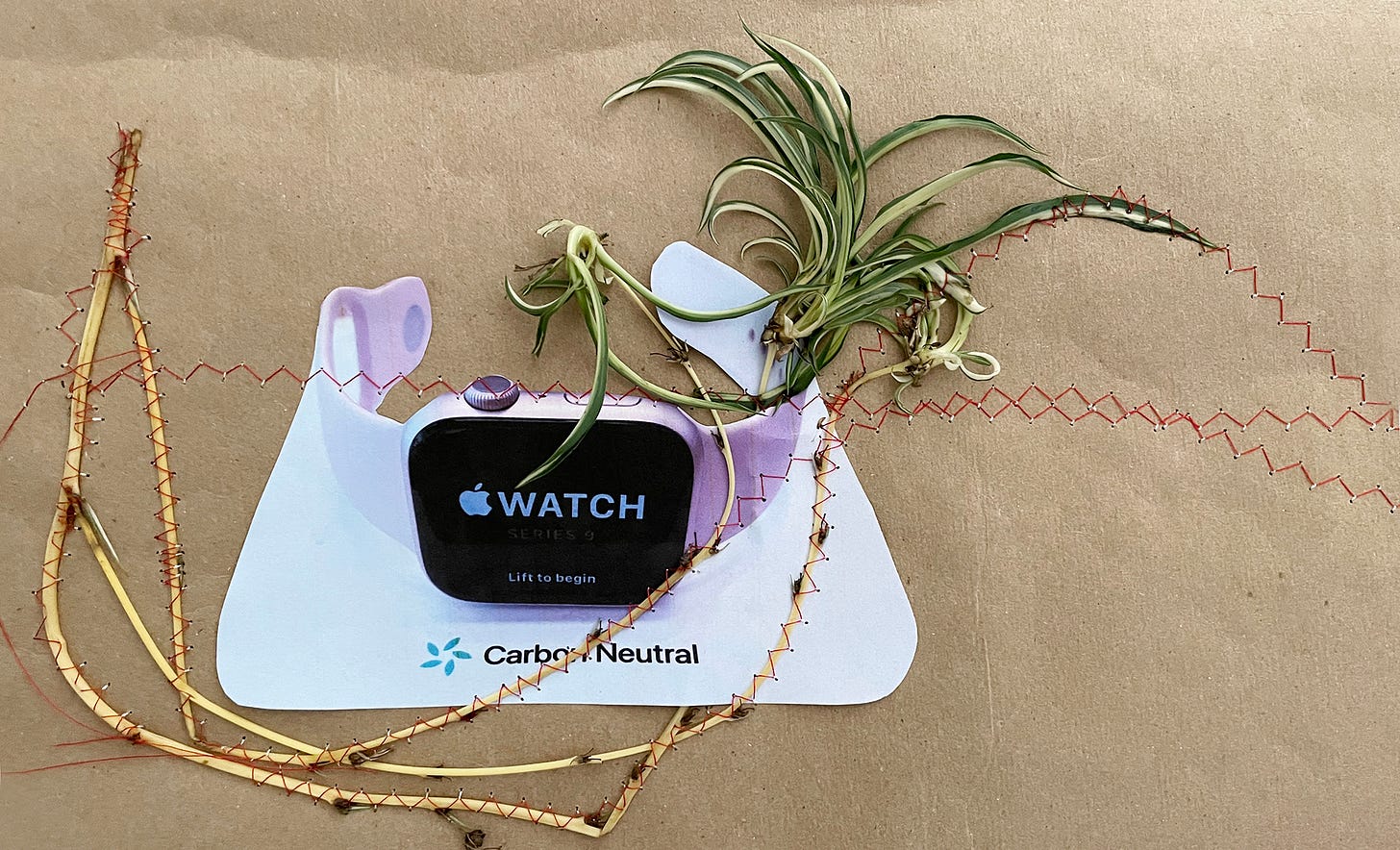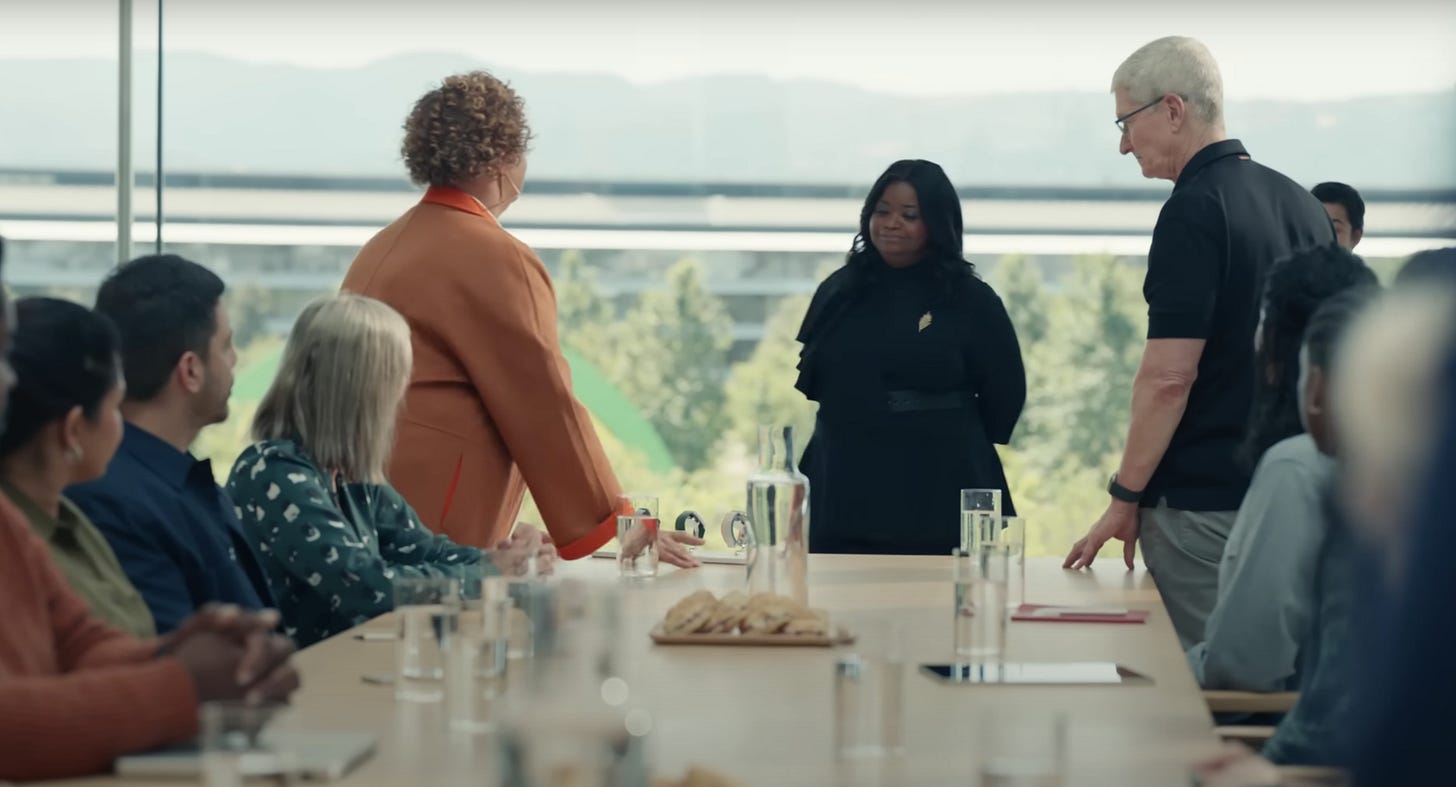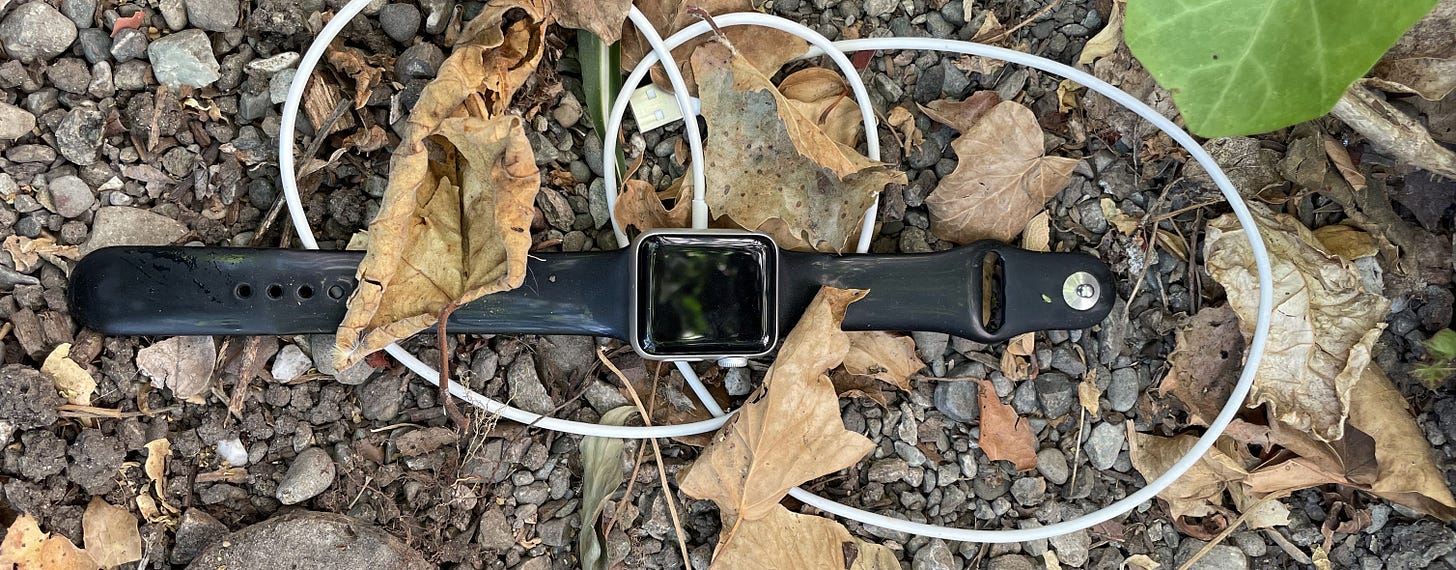How ‘bout them apples?
You can't design a carbon neutral product that doesn't consider the user or how it's used. Or why design needs to be seen as part of a larger system.
I am a design professor bridging the academics of environmental sustainability, the professional design community, and those who want to create change but don’t always know where to begin. We know the world around us is not sustainable, instead we need to find ways to design regeneratively - rejuvenating ourselves, our communities, and our planet.
A corporate sustainability report to keep sustaining sales.
Recently, the internet has been buzzing with Apple’s “corporate sustainability report” delivered via “video storytelling.” It’s been applauded as a creative and captivating way to provide a report most companies do via charts and graphs in PDFs very few people will read. Others have celebrated Apple’s success in “greening” its products and creating the “first carbon neutral” product. Yet missing from the entire report is what happens once their products are purchased and used. No product can ever claim to be carbon neutral or anything neutral if it does not consider the user. And aren’t products, after all, meant to be used?
The 5-minute video features “Mother Nature” (played by Octavia Spencer) visiting Apple to get an update on their promises in 2020 to bring Apple’s carbon footprint to net zero by 2030. Mother Nature expects to be disappointed as she has been by other corporate sustainability reports, speculating they will pass the buck down the road, making promises for “50 years from now when someone else is left holding the bag”. One by one, the idealistically diverse Apple staff sitting around the conference table tries to impress Mother Nature with their exciting updates… eliminating all plastic in their packaging, 100% recycled aluminum in enclosures, no more leather, offices and stores operate on 100% clean electricity, shipping by boat instead of air, planting forests, reducing water. They seem to be doing it all! And then, they top it off by presenting Mother Nature with Apple’s very first carbon-neutral product. A new watch! And there it is… the reveal that this is more than a corporate sustainability report… This is an ad for their new watch. Apple is doing what Apple does best - selling sleek, beautiful, amazingly designed products that are also planned to be addictive, status symbols, and obsolescent.
Simultaneously, another set of ads in bright green were launched to tout Apple’s sustainability efforts. “Everything Apple is going carbon neutral” is their plan, and encourages users that “you’re part of this too!” But how? What happens once this product trades hands to the user?
The ad ends before the story of the user begins.
The story of any product, not just Apple’s, does not end when it arrives on the store shelf. The story continues when the product is purchased, used, and disposed of. And what happens in those chapters has just as much impact, if not more, than what went into everything that happened before you bought it.
Leaving this half of the story out fails to see design as part of a larger system.
Ironically, the launch of the “carbon neutral watch” coincided with the declining health of my own Apple watch. It can’t keep its charge, and I wonder if I can get a new battery or charger.
Yes, there’s my disclosure. While this entire piece is critical of Apple, I’m typing this on a MacBook, next to an iPhone, an iPad with an Apple pencil, and across my family, there’s a handful more Apple products. I’m part of this too.
After running a diagnostic test on my watch, the “genius” at the “genius bar” reminds me, “your watch is pretty old, it’s from 2018, and it’s running an out-of-date OS (operating system)”. I naively ask if updating the OS would make it better. “No, it will actually run worse,” replies the “genius,” revealing just one element missing from the sleek story. With each new release of a new OS and each new update to any app, they will use more and more battery. As soon as you purchase a new piece of hardware, all the software systems are working on making newer operating systems to make it out of date.
Can my battery be replaced?... No.
Can anything be done to fix it holding a charge?... No.
Does it have any trade-in value towards a new watch?... No.
While my five-year-old watch was not nearly as “green” as the new one for sale across the store for more than double what I paid, who’s to say that new watch won’t have the same fate? But even that isn’t the whole story.
“It’s not just what goes into our products, it’s how they’re made.” Apple proudly splashes in neon green in the latest ads. But what about how they are used?
Let’s ask some more questions that Mother Nature didn’t ask in Apple’s video…
How is this product being used?
Technically, how is it being charged? How often is it being charged? Where is the energy to charge it coming from? How does that change based on location or even time of day?
Mentally, and psychologically, are these products bettering our lives or getting us addicted to apps, games, social media, and constant connection?
What will you do with this product? Will you add all your favorite apps? When will you need to update the OS? When will you update all your apps? How often? How much more battery will that use every time you do that?
Who is using this product?
Who has the money to afford this and the technical know-how to use it?
Who is not using this product?
Who can not afford it? Can the workers who produced these products in factories afford these? Or those who mined the metal?
When will this product die, and why?
Will you replace it because it’s stopped working, or will you replace it because a newer, sexier, fancier model comes out?
What will you do with it when it does die? Will you recycle it? Even if you take it to a recycler, can it, and will it actually be recycled? By who? How?
This list is certainly not inclusive of all the questions that need to be asked, nor does it include any questions about the claims Apple made about everything that went into the product.
The truth is the obsolescence of these products is planned before we purchase them. Technically, it has an expiration date on when it will stop working. The trends are scheduled in advance, already knowing when the next newer version will launch. These products are designed to draw us in and get us addicted so that no matter what, we’ll do the next update and buy the next version. It’s no secret that many tech execs, including Steve Jobs and Bill Gates, don’t allow their own children to use their products. Our “old” products lose value to be used, value in recyclability. More so, we tend to become emotionally attached, think we might use it again or worried about where our data will go, that most people hold on to old technology rather than trade it in. Some estimates predict only 1% of phones get recycled.
Apple might claim to have a new sustainability plan, but there’s already been a plan in place that’s designed to go against all of that impact.
At the end of Apple’s visual storytelling of a corporate sustainability report/ ad to get you to buy more, Tim Cook proudly stands up and reports, “We’ve innovated and retooled almost every part of our process to reduce our impact on the planet… But there’s still a lot more work to do”.
What if, instead of doing more, Apple did less?
What might it look like to design for repair instead of replacement?
What might it look like to design fewer updates, fewer products, and slowing trends?
What might it look like to design for mindfulness instead of addiction?
And what if, instead of designing to suck all the battery life out of a product, slowly making it less and less efficient, what if it could be designed to create more energy? Not just to become more and more energy efficient with each OS update, but to become regenerative? To be restorative?







